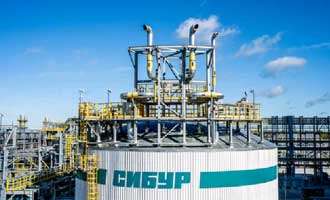 The only domestic maker of halobutyl rubbers (HBR), Russian petchem firm Sibur’s Nizhnekamskneftekhim completed the upgrade of its HBR capacities, ramping them up by one third, from 150 to 200 kilotoones. Sibur now accounts for 25% of butyl rubber and halobutyl rubber output globally, with Nizhnekamskneftekhim boasting the world’s largest halobutyl rubber production capacity.
The only domestic maker of halobutyl rubbers (HBR), Russian petchem firm Sibur’s Nizhnekamskneftekhim completed the upgrade of its HBR capacities, ramping them up by one third, from 150 to 200 kilotoones. Sibur now accounts for 25% of butyl rubber and halobutyl rubber output globally, with Nizhnekamskneftekhim boasting the world’s largest halobutyl rubber production capacity.
The RUB8 billion upgrade project saw six new HBR production units installed and 16 revamped. The project was completed on schedule as part of the company’s agreement with the Russian Ministry of Energy to build and modernise petrochemical facilities. The plant licensor is Yarsintez Research Institute, and the general designer is Kazan National Research Technological University, one of Sibur’s anchor universities.
Rustam Minnikhanov, the Rais (Head) of Tatarstanm said,“Some 50 years ago, this facility with a design capacity of 35 ktpa produced its first batch of butyl rubber. We are now launching new halobutyl rubber capacities as part of a comprehensive upgrade to increase and automate production and meet all the latest environmental standards. The project is worth over RUB8 billion, an impressive number. Given all the sanctions-related challenges, this is a solid performance. We are keeping a watchful eye on the petrochemical industry, as its growth is key to our economy.”
The upgraded production will fully meet domestic needs for halobutyl rubbers and step up Russia’s non-commodity exports of high-margin products to the markets of friendly countries: China, Thailand, Vietnam, and India.
Halobutyl rubbers are primarily used to produce tyres with improved gas barrier and deformation resistance, along with tensile strength. An HBR component also increases tyre life by 15–20%, reduces total waste throughout the lifespan by up to 10%, and cuts fuel consumption and vehicle exhaust emissions, which makes tyres more efficient and eco-friendly. Halobutyl rubbers are also applied in the healthcare industry.
Mikhail Karisalov, Chairman of the Management Board and CEO of Sibur added, “This rubber facility is indeed the most advanced of those that exist today. Its upgrade started back in 2020, before SIBUR acquired assets in Tatarstan. The project saw some really smart and high-quality solutions, but due to external factors, a lot of them had to be fundamentally reconsidered. That said, we were able to ensure that the new production is up to the mark in terms of competitiveness, output, eco-friendliness, and safety for the next 15–20 years. This is how we now approach designing new capacity using licensed technologies available to us.”
The Nizhnekamskneftekhim upgrade project boasts cutting-edge green solutions, such as leak-proof equipment installed along the entire HBR production chain, and air purification systems. Despite the 30% increase in output, there will be no growth in the facility’s environmental impact.
